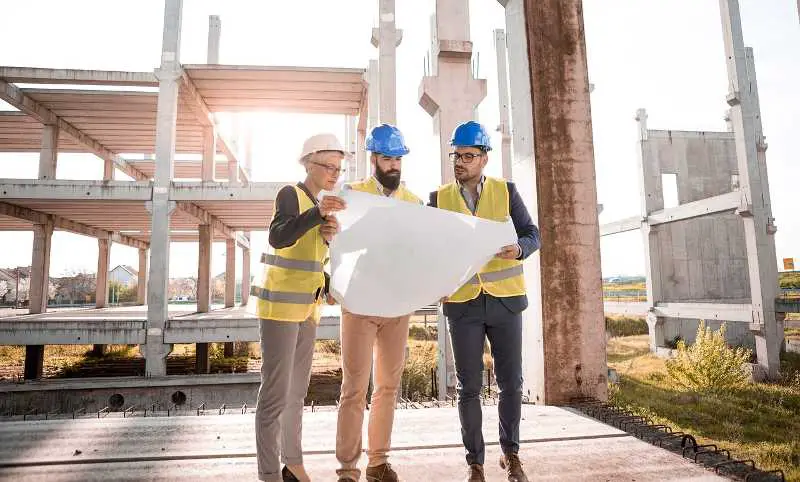In the ever-changing construction industry, making sure buildings meet certain standards is extremely important as it ensures the safety, legality, and quality of construction projects.
New South Wales, with its intricate regulatory landscape, presents a unique set of challenges and opportunities for developers.
Understanding these regulations is not just about ticking boxes, it’s about safeguarding the integrity of your project and ensuring its success from the ground up.
The complexity of building compliance in NSW can seem overwhelming at first glance. As you may know, there are so many laws, codes, and standards that you may feel like navigating through a maze.
Yet, this complexity highlights how important compliance is for the safety and interests of developers, builders, and the broader community. Following the rules is important, but you also need to guarantee built structures that are safe, function effectively, and are environmentally friendly.
It may be challenging to go deeper into the details of building compliance in NSW, but keep in mind that you don’t have to do it by yourself.
There are many experts (we’ll talk below) in the field ready to help you. With their knowledge and support, it can make you smoother to deal with building compliance and even positive aspects of your project.
Key Regulations Unpacked
In the heart of NSW’s regulatory framework lie several key pieces of legislation that every developer should be familiar with.
The Environmental Planning and Assessment Act 1979, for instance, sets the stage for how development proposals are assessed and approved, which emphasizes the need for environmental considerations in planning decisions.
Similarly, the Building Products (Safety) Act 2017 ensures that the materials used in construction meet stringent safety standards, protecting both builders and occupants.
When you understand these regulations, you see they guide your project’s design, construction, and how it affects the community and environment. Every rule aims to protect public safety or keep NSW’s natural beauty intact.
By familiarising yourself with these laws, you’re not just complying with the letter of the law, you’re aligning your project with broader societal values.
But, knowing the rules isn’t enough, you also need to know how they fit with your project. This is where the expertise of professionals becomes invaluable.
They can explain how these rules work for your project, ensuring that your project not only meets legal requirements but also contributes positively to the community and environment.
The Pivotal Role of Building Surveyors
Building surveyors play an important role in the construction process, they act as the bridge between regulatory requirements and the practicalities of building design and construction.
Their expertise in interpreting and applying building codes makes sure projects meet legal standards and reach top levels of safety and quality.
For developers, a building surveyor is not just a compliance officer; they are a vital partner in achieving project success.
Kyrillos Ghaly, with his extensive experience in building certification and compliance, exemplifies the value that a skilled building surveyor brings to a project.
As the Director at Building Certifiers Pty Ltd, located in Parramatta, Ghaly’s deep understanding of critical stage inspections and construction processes has been instrumental in guiding numerous residential and large-scale projects to successful completion.
His commitment to maintaining high industry standards, coupled with his ability to manage complex compliance requirements, makes him an invaluable asset to any development team.
The role of a building surveyor extends beyond mere compliance. They are advisors, problem-solvers, and advocates for quality and safety in the built environment.
In a complex and ever-changing regulatory environment, the guidance of experienced professionals like Ghaly is indispensable.

Innovations in Compliance: Making the Process Smoother
The world of building compliance is not static. Technological advancements and regulatory initiatives are continually shaping the landscape, which makes the process smoother and more efficient for builders and developers.
Innovations in digital planning and building inspection tools, for example, are streamlining the compliance process, reducing paperwork, and increasing transparency.
Susan Lloyd, a compliance officer within the New South Wales Department of Planning, Industry and Environment, has been at the forefront of these initiatives.
Her efforts to simplify the compliance process have had a tangible impact on building practices in NSW. By introducing more efficient procedures, Lloyd is helping to reduce the administrative burden on builders and developers, allowing them to focus more on the quality and safety of their projects.
These innovations aim to simplify things for developers and also to enhance the quality of buildings and constructions.
You can speed up approvals and ensure compliance throughout your project by simplifying processes. This approach helps build a culture of safety and quality, benefiting everyone involved, from builders and developers to the future users of the buildings.
Overcoming Compliance Hurdles: Practical Solutions
Compliance challenges are a reality of the development process, but they don’t have to disrupt your project. With the right strategies and tools, you can navigate these hurdles effectively, and therefore ensure that your project stays on track.
One of the first steps is to engage with the regulatory process early. If you can understand the requirements and potential challenges from the outset, you can design your project with compliance in mind, and thus reduce the risk of costly revisions later on.
Actionable advice and checklists can be invaluable tools in managing compliance. They provide a clear road map of the steps you need to follow and make sure you don’t overlook anything.
Whether it’s ensuring that your building materials meet safety standards or that your design complies with zoning regulations, these tools can help you maintain a clear focus on compliance throughout the development process.
Moreover, don’t underestimate the value of professional guidance. Experienced professionals offer practical solutions to compliance challenges, with their knowledge of regulations and experience from similar projects.
They identify potential issues early on and develop strategies to solve them, which helps minimize the impact on your project’s timeline and budget.
The Cost of Cutting Corners: Non-Compliance Risks
The temptation to cut corners in the pursuit of cost savings or expedited timelines can be strong, but the risks of non-compliance are far too great to ignore.
Safety hazards, legal penalties, and damage to your reputation are just some of the potential consequences of failing to adhere to building regulations. These risks can put your current project in danger and also affect your future projects for a long time.
The consequences of non-compliance extend beyond the immediate legal and financial penalties. They can also result in project delays, increased costs, and lost opportunities.
In the worst-case scenario, non-compliance can lead to building failures, endangering lives and leading to significant legal liabilities. The message is clear: compliance is not an area where shortcuts can be taken.
A cautionary tale reminds us how important it is to make compliance a top priority in projects. Investing the needed time and resources to meet all regulatory requirements not only helps you avoid risks but also sets a foundation for long-term success.
So compliance should be seen as an integral part of your project planning and execution, not as an afterthought or a box to be ticked.
Looking Ahead: The Future of Building Compliance
The landscape of building compliance in NSW is constantly evolving, shaped by technological advancements, regulatory changes, and shifting societal expectations. Staying ahead of these changes is needed for developers and builders who want to increase the success of their projects in the years to come.
Emerging trends, such as the increasing emphasis on sustainability and energy efficiency, are likely to play a significant role in shaping future compliance requirements.
As you may know, adapting to these changes requires a proactive approach. By staying informed about potential regulatory changes and engaging with industry developments, developers can position themselves to meet future challenges head-on.
This may involve investing in new technologies, adopting more sustainable building practices, or seeking out additional training and professional development opportunities.
You can look forward to both facing new challenges and grabbing new opportunities in the future of building compliance in NSW.
As the industry moves towards more sustainable and efficient building practices, developers who embrace these changes can differentiate themselves in the market. You can regard compliance as an opportunity to innovate and improve, rather than as a hurdle to be overcome.
Navigating Resources: Where to Find Help
A lot of resources are available to help you understand and meet your legal obligations. Government websites, professional services, and industry associations can provide valuable information and support, which can guide you through the compliance process.
Mark Thompson, a senior building surveyor for the City of Sydney, has been instrumental in developing compliance guidelines that serve as a valuable resource for developers.
These guidelines provide straightforward, useful tips on how to follow building regulations, making the compliance process easier to understand. Developers can use these resources to better know their responsibilities and how to meet them.
In addition to official resources and professional services, the value of professional networks cannot be overstated. You can engage with industry peers, attend seminars and workshops, and participate in professional associations that provide insights and advice.
Building a Path to Compliance Success
You’ll find the path through NSW’s complex building compliance rules challenging, but taking this path is important. Learn why compliance matters, familiarize yourself with essential regulations, and seek advice from experts to confidently handle these challenges.
As you already know, following compliance rules isn’t just for meeting standards, it’s a way to contribute to creating safe, sustainable, and beneficial spaces for everyone.
Professionals like Kyrillos Ghaly, Susan Lloyd, and Mark Thompson exemplify the value of expertise and innovation in achieving compliance success. Their contributions to the industry serve as a reminder that with the right approach, compliance can be a seamless part of the development process, rather than a barrier to success.





